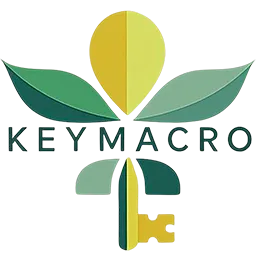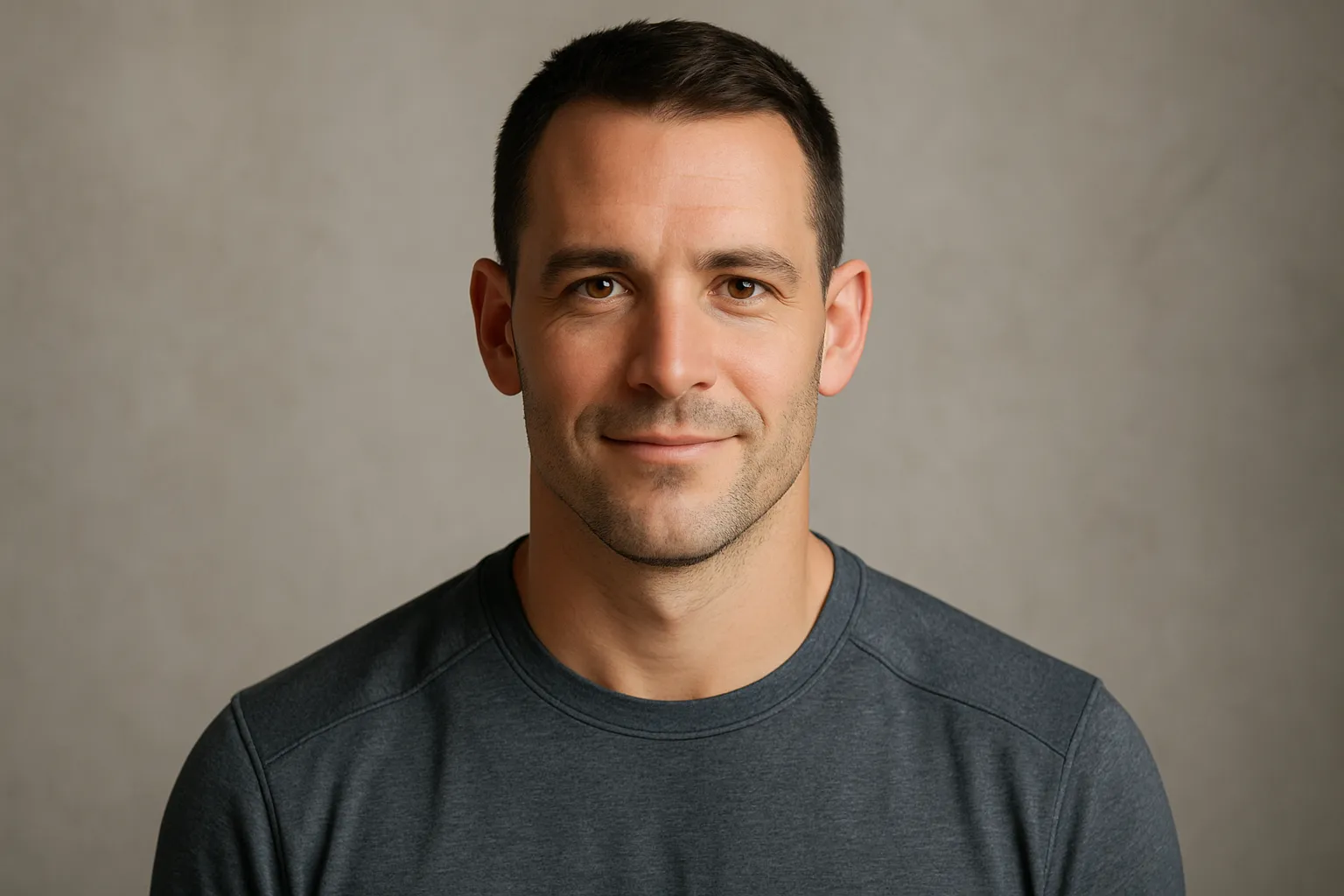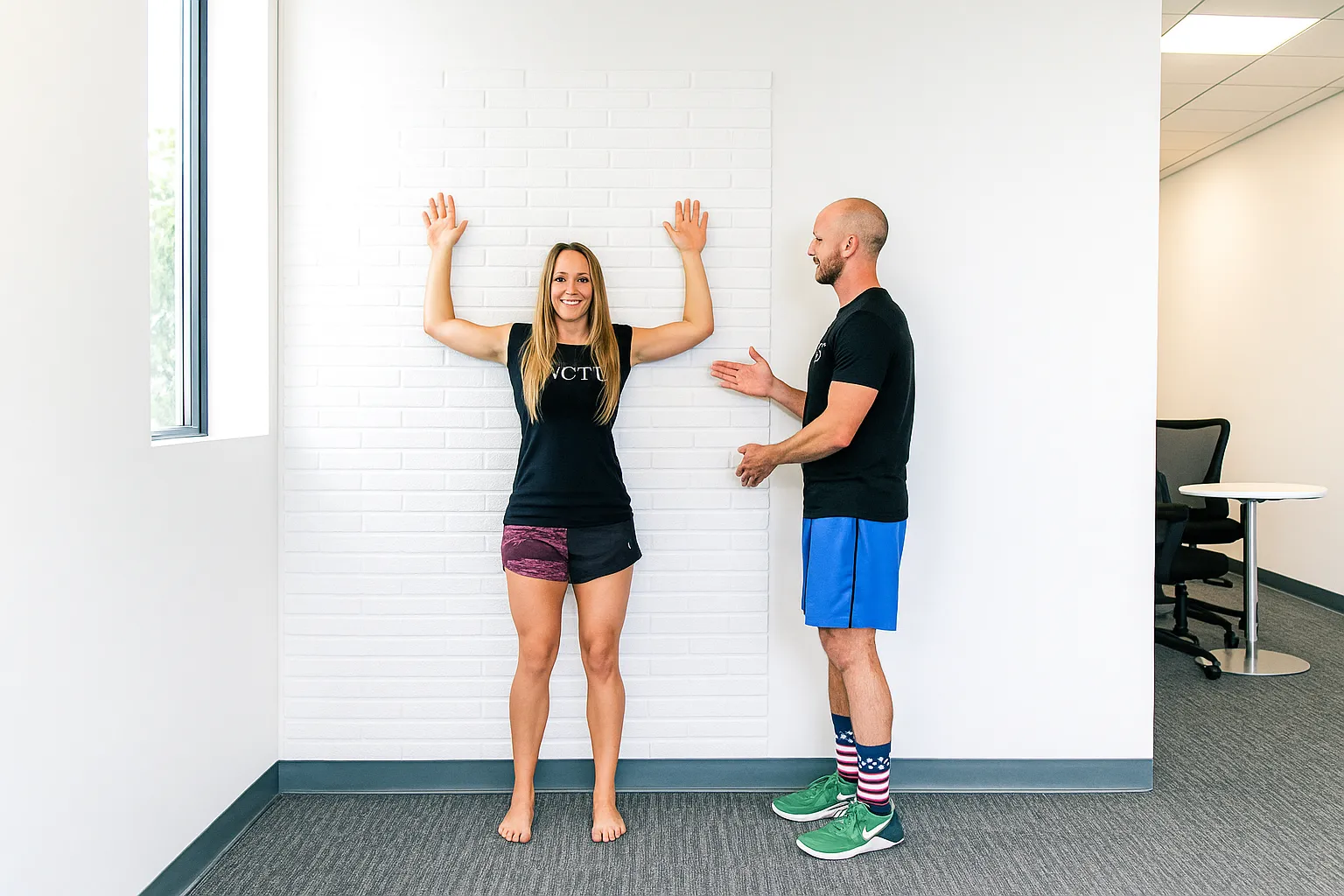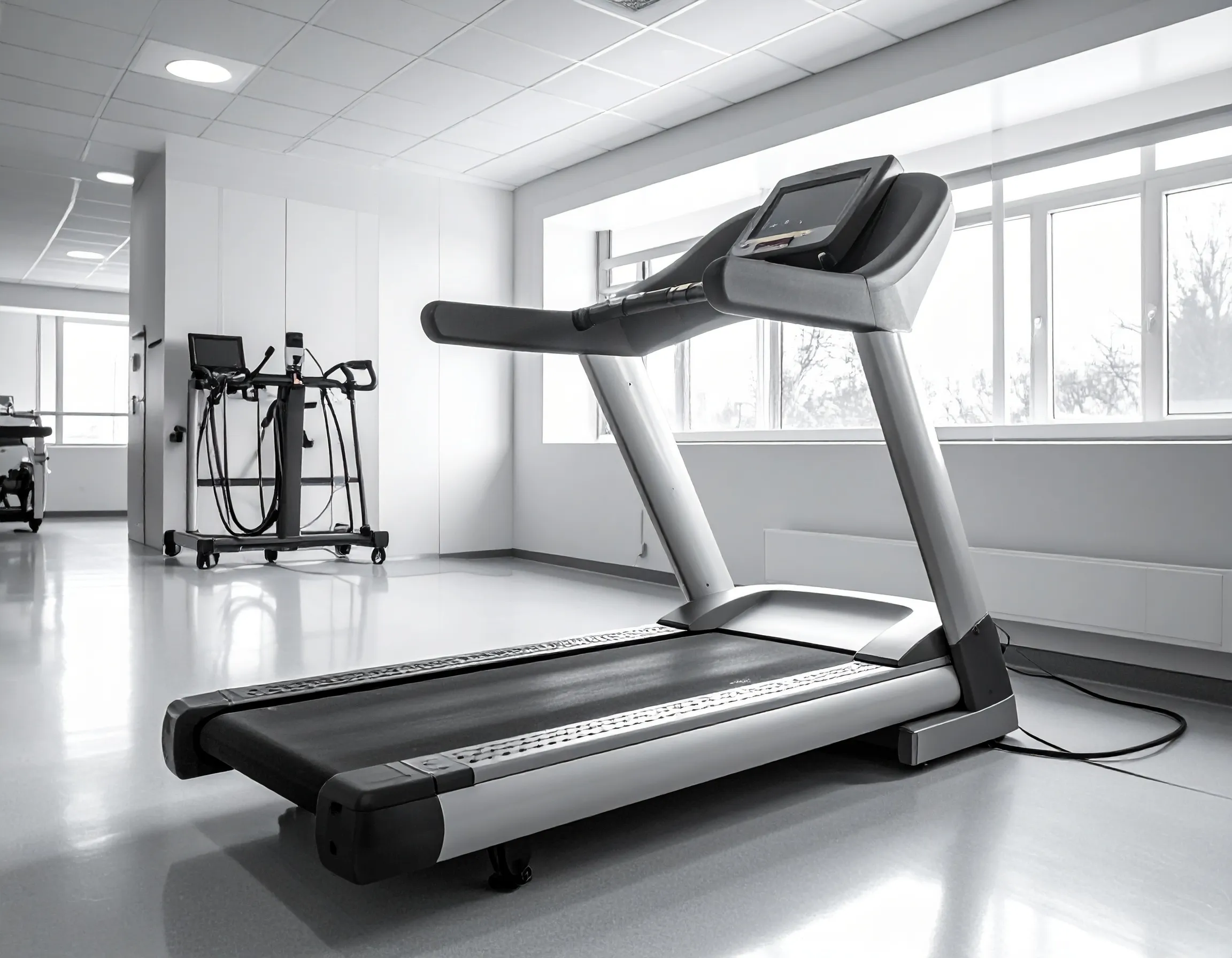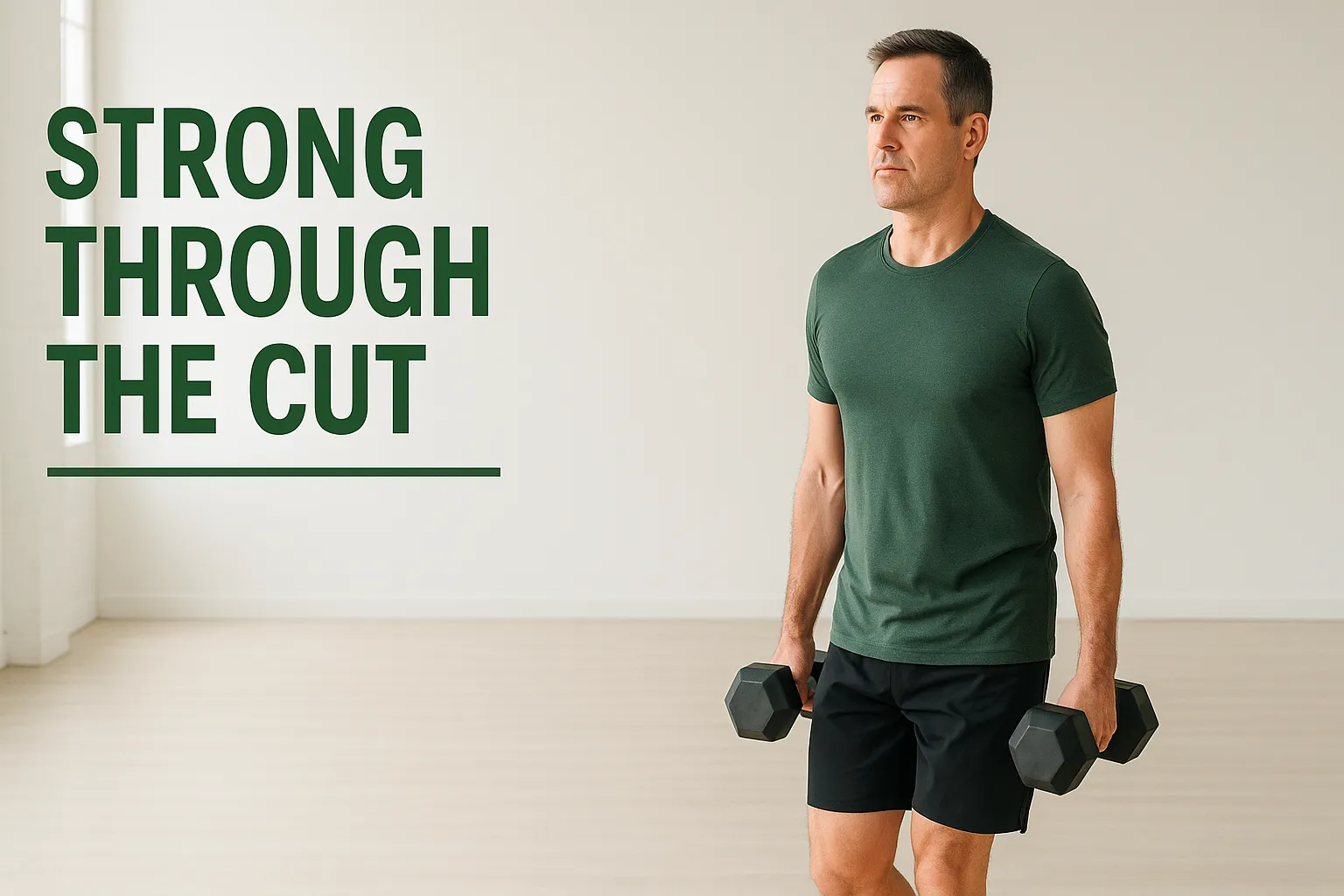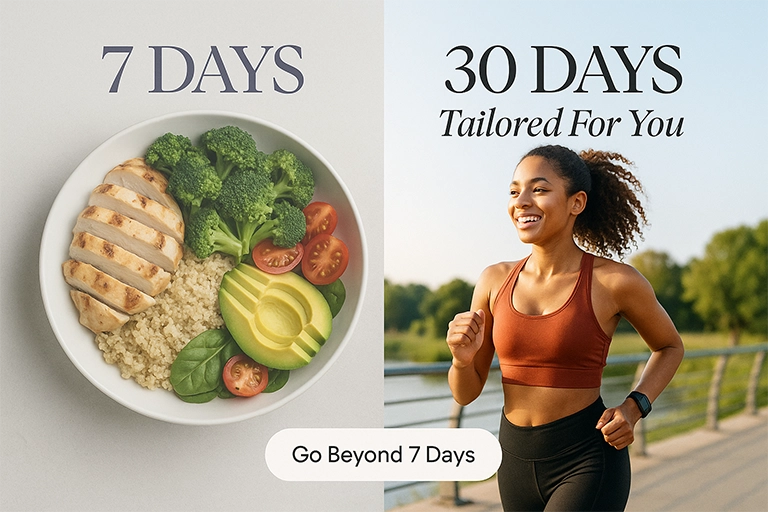Why “Build, Don’t Burn” Works
Most people overestimate what intensity can do in a week and underestimate what consistency can do in a year. Sustainable training prioritizes repeatable sessions over heroic efforts. That means:
- Appropriate volume you can recover from
- Progressive overload applied gradually (more reps, tension, or control)
- Movement quality before load or speed
When your plan respects recovery, you gain strength, keep energy for life outside the gym, and avoid the boom-and-bust cycle.
Explore the Mind pillar → • Nutrition basics →
The Simple Framework (3×/week)
Day A — Push + Hinge (30–40 min)
- Push: elevated push-ups or dumbbell press (3×8–12)
- Hinge: hip hinge or Romanian deadlift pattern (3×8–12)
- Accessory: band pull-aparts (2×15–20), side plank (2×30s)
Day B — Pull + Squat (30–40 min)
- Pull: row or band row (3×8–12)
- Squat: goblet squat or bodyweight tempo squat (3×8–12)
- Accessory: calf raises (2×15), dead bug (2×8/side)
Day C — Mobility + Conditioning (20–30 min)
- Flow: 10–12 min mobility circuit
- Conditioning: brisk walk intervals or low-impact cycles (10–15 min total)
- Breath work: 3–5 min nasal breathing cooldown
Inline tip: If you train at home, a simple set of resistance bands lets you progress pulling moves and warm-ups without needing heavy equipment.
Try a compact set like this: Fit Simplify Resistance Bands.
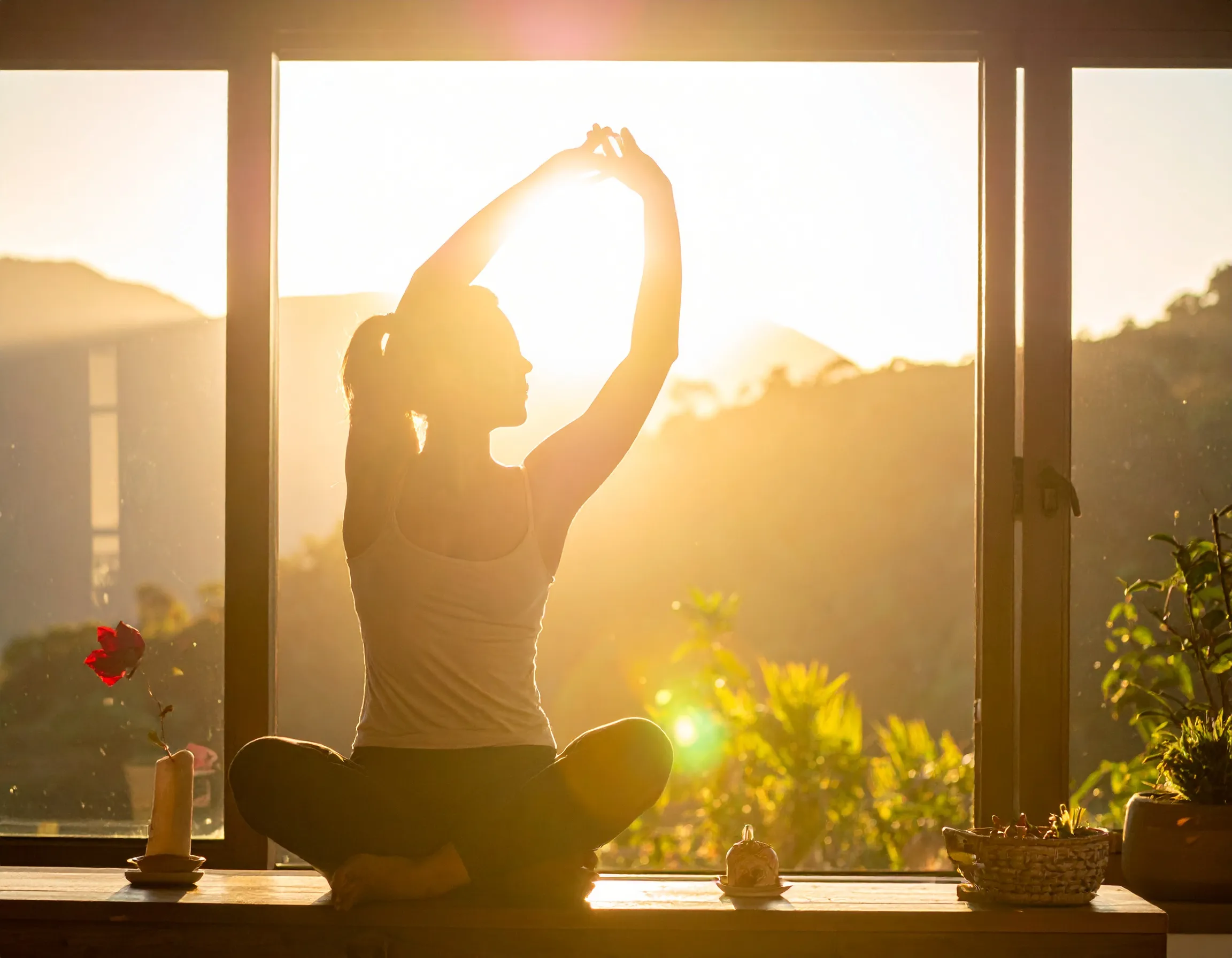
How to Progress Without Burning Out
- Start with a weight or variation you own. If you can’t pause each rep for a count, it’s too heavy.
- Add reps before load. For example, build from 8 → 12 reps across weeks, then bump load slightly.
- Use tempo and range. Slower lowering (2–3s) and full-range reps are quiet ways to increase challenge.
- Cap session length. Most sustainable training fits in 30–45 minutes. Stop while you still have energy.
- Sleep, protein, steps. Recovery isn’t fancy: aim for consistent sleep, daily steps, and protein at each meal.
- (If you use protein powder, choose one that agrees with you; a baseline pick is Optimum Nutrition Whey.)

Fueling Training (Without Food Stress)
You don’t need to track every gram to support training. Start with plate structure:
- Protein anchor (eggs, Greek yogurt, chicken, tofu)
- Color from plants (veg or fruit)
- Smart carbs for energy on training days (rice, potatoes, oats)
- Fats for staying power (olive oil, avocado, nuts)
Hydration matters more than most people think. A simple habit: fill a reusable bottle twice daily.
A durable option: Hydro Flask 24oz Water Bottle.
New to balanced plates? Start here → 7-Day Jumpstart
The KeyMacro Takeaway
Train to build capacity, not to spend it all.
Small, consistent sessions + gradual progressions = results that last.
🔑 Next Step
- Read the Mind companion: Momentum Over Motivation
- Planning a breather? The Power of Reset Days
- Ready to structure meals? Free 7-Day Jumpstart
Disclosure: Some links may be affiliate links. If you purchase through them, we may earn a small commission at no extra cost to you. We only recommend items that align with our philosophy and we’d use ourselves.
